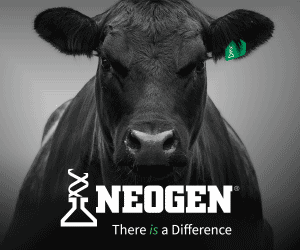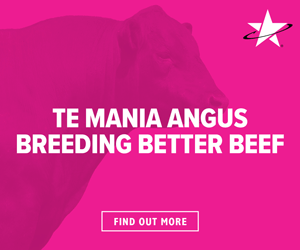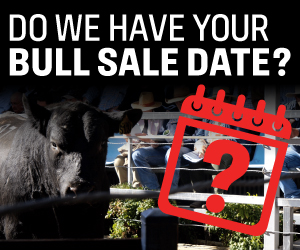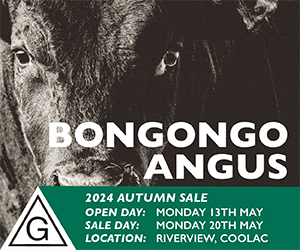Performance Recording in Small Herds
One of the most common questions asked by seedstock breeders is “what size herd do you need to obtain effective results from TACE?”
There is no minimum herd size requirement for herds wishing to participate in the TransTasman Angus Cattle Evaluation (TACE), however the nature of the TACE analysis means that there are a number of
additional considerations that small herds need to make to ensure they obtain effective results from TACE.
In particular, small herds need to pay careful attention to two main concepts, being contemporary group formation and the creation of genetic linkage.
Although the TACE analysis is underpinned by a very sophisticated analytical model, the basic mechanism by which it works is to directly compare the performance of an animal with the performance of other “similar” animals within the same contemporary group.
Put simply a contemporary group can be described as animals from the same herd, of a similar age and run under the same conditions i.e. animals that have had the same opportunity to perform.
For most performance traits, calves will be analysed in the same contemporary group if they:
Were bred in the same herd Are of the same sex Are of the same birth number (i.e. twins are not compared to single calves)
- Are of the same birth status (i.e. ET calves are not compared to AI/natural calves)
- Were born in the same calving year
- Were born within 45 days (for birth and 200 day weight traits) or 60 days (for 400 & 600 day weight, scrotal and scanning traits) of each other
- Have performance recorded on the same day (& any previous measurements have been recorded on the same day)
- Have been run under the same conditions (breeder allocated management group)
Small herds must try and ensure there are at least two animals that meet the above criteria if their performance records are to be analysed effectively by TACE. When there is only one animal represented in a contemporary group, there are no other “similar” animals to which its performance can be directly compared and thus the performance submitted for the animal will not be used in the TACE analysis, rendering it ineffective.
As illustrated in Figure 1, the effectiveness of an individual animal’s performance record increases as more animals are represented within each contemporary group. The general aim for all small herds should be to maximise contemporary group size as much as possible.
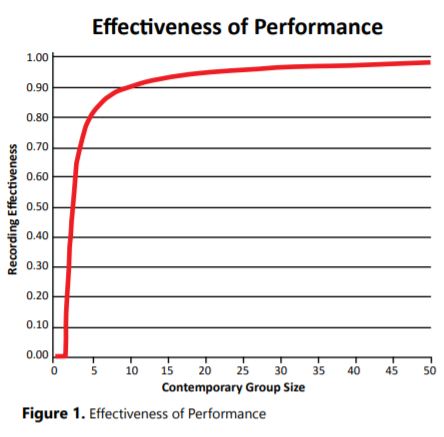
Genetic linkage gives the TACE analysis the ability to compare the performance of animals from different contemporary groups. This is particularly important for animals running under different conditions in different herds, but also relates to the comparison of animals running in different contemporary groups within a herd. For example, animals born in the same herd but born in different years.
For TACE to compare animals from different contemporary groups, be it in the same herd or in different herds, each contemporary group must have some performance recorded progeny from common animals (typically common sires) so that the performance recorded animals in each group are genetically linked.
As a simple example of genetic linkage, consider the scenario outlined in Figures 2 and 3 where 3 different mobs of calves are compared.
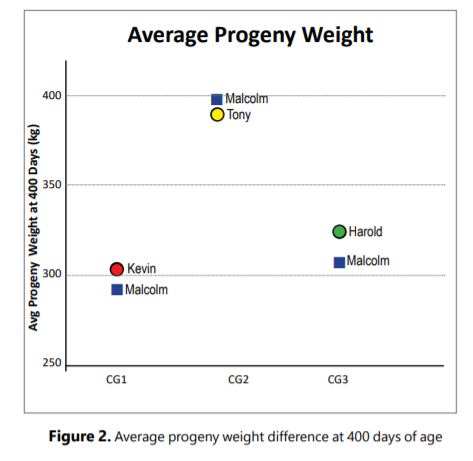
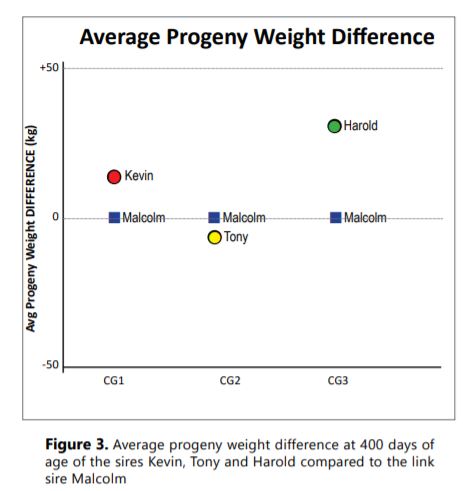
There are environmental differences between the groups – Contemporary Group 1 (CG1) has relatively poor nutrition, Contemporary Group 3 (CG3) is average and Contemporary Group 2 (CG2) is relatively good. All of the progeny in each group are by different sires (Kevin, Tony and Harold), with a common link sire (Malcolm) existing in each contemporary group.
While it is not possible to directly compare the performance of the calves in the different groups due to the environmental differences, the link sire makes it possible to compare the progeny of the different sires represented in each group by acting as a benchmark in each group.
When compared to the link sire Malcolm, Harold in contemporary group 3 can be considered to have the highest genetic value for 400 day weight performance, followed by Kevin in group 1, followed by Tony in group 2. Graphically, these differences are shown in Figure 3.
For the purpose of this exercise, all sires are assumed to be joined to cows of equal genetic merit, although in practice, TACE accounts for any genetic differences that exist between the dams.
Management Strategies for Small Herds
Taking into consideration the concepts of contemporary group formation and genetic linkage, it becomes obvious that small herds, if not managed with these concepts in mind, may struggle to maximise the effectiveness of their performance recording.
Because of their low animal numbers, small herds tend to have high numbers of single animal contemporary groups and may struggle to create genetic linkage, thereby reducing the effectiveness of their performance recording.
There are however a variety of management strategies small herds can implement to increase the effectiveness of their performance recording.
- Restricted calving periods – as calves are generally only included in the same contemporary group if they are born within 45 or 60 days of one another, it is recommended that small herds aim to have a restricted calving period. A calving period of 6 to 8 weeks is ideal.
- Run all calves under the same management conditions – where possible, all calves should be run under the same management conditions. Where calves need to be split into different groups e.g. male calves into steers and bulls, weigh the whole group before it is split. Where possible, use the same criteria that will be used in TACE to split mobs. For example divide animals by sex of calf, by age of calf, by ET calves vs non-ET calves or by prior management groups.
- Record performance for all animals on the same day – as TACE only directly compares the performance of animals that has been recorded on the same day, it is important to record the performance for all animals within a contemporary group on the same day e.g. weighing all heifers on the same day.
- Inclusion of commercial/unregistered animals – many breeders have a small stud herd run in conjunction with commercial animals. If you have a commercial herd of similar breed content to your stud animals, it may also be possible to record these animals with Angus Australia. This will allow a greater number of animals to be included in the same contemporary group.
- Associated Herds – In the situation where two herds run their animals together on the same property, Angus Australia can associate the two memberships to allow the performance of calves in both herds to be directly compared together.
- Use more than one sire – The TACE analysis will be more effective if at least 2 sires are represented in each contemporary group as the performance of the progeny is going to contribute to the calculation of the EBVs of their sire. Where AI programs are used, they should be timed so that AI sired calves are born at the same time as calves sired by natural joining’s.
- Supply recipient dam details – Herds that use embryo transfer need to identify the breed and age of the recipient dams of ET calves. If the breed of recipient dams is not supplied ET calves are split into single animal contemporary groups and therefore their performance is not effective. To maximise the analysis of ET calves by TACE, it is preferable if the recipient dams used are all of the same breed.
- Use a range of sires – common sires link contemporary groups within a herd, across herds and across years. In order to create genetic linkage across herds, it is recommended that where possible, sires bred or used by other herds who are performance recording with TACE, be used alongside home bred sires.
- Use sires across years – do not replace all sires in the herd from one year to the next so that across year comparisons can be made.
- Mix cows after joining – mixing cows that have been single sire joined, particularly AI females, after joining will create contemporary groups with more than one sire represented.
- In addition to the analysis of pedigree and performance information, TACE also incorporates DNA information from several different genomic products.
- By contrast to performance information, the effectiveness of genomic information within TACE does not increase as contemporary group size increases, and so testing animals with genomic products offers small herds with a valuable opportunity to increase the accuracy of the EBVs that are calculated for their animals, particularly in situations where it is not possible to collect effective performance information.
Angus Australia acknowledges the funds provided by the Australian Government through the Meat & Livestock Australia Donor Company (MDC).
This resource was created as a result of a collaboration between Angus Australia and Meat & Livestock Australia Donor Company (MDC) (Project P.PSH.1063).


